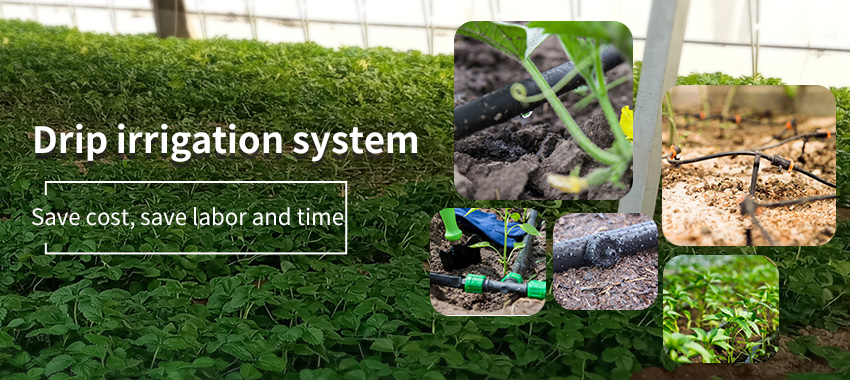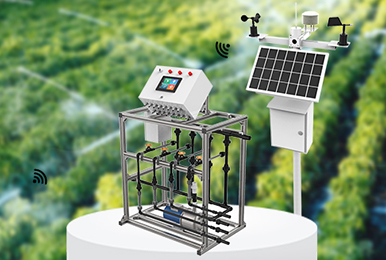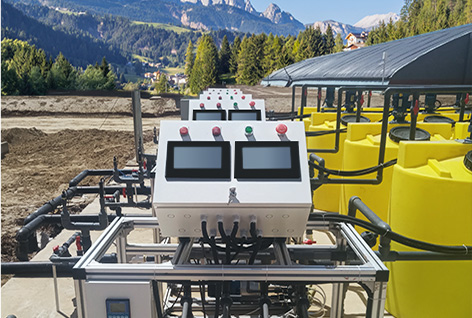Background:
According to relevant statistics, the annual agricultural water consumption accounts for 65% of the total water consumption. The utilization rate of its irrigation water is only 40%. Compared with the high utilization rate of 70%-80% in advanced water-saving countries, the gap is obvious. Due to the unreasonable use of water and fertilizer, a series of problems such as soil salinization, soil PH value damage, and soil and water pollution are caused. From this point of view, it is imperative to solve the problem of water resources. Since the development of the Internet of Things, we can use smart agricultural irrigation equipment for online monitoring and control.
Water is the source of life, from small plants and trees to human survival and reproduction, all cannot do without water. Since ancient times, human beings have lived near water, and places with water sources are more convenient for human activities. As a big agricultural country, the growth of agricultural products cannot be separated from water sources. In order to increase the yield of crops, humans began to use chemical fertilizers.

Why is it so important:
In the “14th Five-Year Plan”, it has been clearly proposed to build a water-saving society. The newly added high-efficiency water-saving irrigation area was 60 million mu, and 200 water-saving irrigation areas were created. By 2025, 1.07 billion mu of high-standard farmland will be built nationwide. It can be seen that the issue of agricultural irrigation has attracted national attention.
According to relevant data analysis, from 2015 to 2020, the market size of my country’s water-saving irrigation equipment industry has increased from 60.44 billion yuan to 115 billion yuan. The compound annual growth rate is 13.7%. In the future, based on the support of national policies and the gradual improvement of water-saving awareness of farmers. It is estimated that by 2024, the market size of my country’s water-saving irrigation equipment industry will reach 238.46 billion yuan.
Problems faced and future development:
In the small area of farmland in rural areas, pumping irrigation is still used, and one end of the water pipe is connected to the pumping well. Put the other end into the side of the farmland, turn on the machine, and the water will flow out from the water pipe until it fills the entire farmland. During the watering period, it is necessary to patrol back and forth continuously to prevent places that are not watered in place. It would take hours to irrigate such an acre of land.
If large areas of farmland continue to use this method. Not only will it cause waste of water resources, but it will also easily cause uneven watering. Water less or more. And because the area is too large, wiring, water bills, and power supply are all headaches for farmland managers. Today, with the vigorous promotion of the country, the power of science and technology has penetrated into the agricultural production process. Among them, the intelligent irrigation system breaks the traditional irrigation method. Solve the problem of large-scale farmland irrigation.

Smart Agricultural Irrigation System:
The smart agricultural irrigation system is a new type of smart agricultural wireless irrigation solution. Its principle uses the ultra-long-distance, low-power LORA wireless transmission technology of spread spectrum communication. Plus many different sensors. Measure parameters such as humidity, temperature, light intensity and soil moisture in the overall agricultural environment. Stream data in real time and analyze it.
The system can set different thresholds for different elements. Remote manual human intervention is possible when the monitored elements deviate from the thresholds within the set range. Automatic or timed, as a control condition for irrigation equipment. In this way, intelligent irrigation can be realized and the utilization rate of water and fertilizer can be improved. Reduce power consumption and change the previous issue of the contradiction between transmission distance and power consumption.
The smart agricultural wireless irrigation system is composed of LORA gateway, LORA collector (weather + soil), LORA valve controller, and four agricultural conditions forecasting platform.

Jingxun smooth water and fertilizer integrated irrigation equipment:
Water and fertilizer integration technology is a new type of agricultural technology that integrates irrigation and fertilization. The integration of water and fertilizer is to use the pressure system (or the natural decline of the terrain) to mix soluble solid or liquid fertilizers according to the soil nutrient content and the fertilizer requirements and characteristics of crop types, and the fertilization solution and irrigation water are mixed together through a controllable pipeline system. Water supply and fertilizer supply. After the water and fertilizer are dissolved, sprinkler irrigation is formed through pipes, spray guns or nozzles, which are sprayed evenly, regularly and quantitatively in the crop growth area, so that the soil in the main growth area is always loose and has a suitable moisture content.
Summarize:
Smart agriculture wireless irrigation system saves a lot of human resources. The use of scientific and technological means to replace artificial power has achieved water resources conservation. The development strategy to improve the utilization rate of fertilizers has reduced the rate of environmental pollution. Realize science and technology to rejuvenate the country. Finally, the state promotes water-saving irrigation, rational fertilization, and comprehensively improves the utilization rate of water and fertilizer. It is not only a necessary condition for the construction of modern agriculture in our country. It is to ensure the national water supply and food security. Recommend strategic requirements for sustainable development.